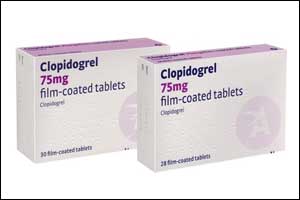- Home
- Editorial
- News
- Practice Guidelines
- Anesthesiology Guidelines
- Cancer Guidelines
- Cardiac Sciences Guidelines
- Critical Care Guidelines
- Dentistry Guidelines
- Dermatology Guidelines
- Diabetes and Endo Guidelines
- Diagnostics Guidelines
- ENT Guidelines
- Featured Practice Guidelines
- Gastroenterology Guidelines
- Geriatrics Guidelines
- Medicine Guidelines
- Nephrology Guidelines
- Neurosciences Guidelines
- Obs and Gynae Guidelines
- Ophthalmology Guidelines
- Orthopaedics Guidelines
- Paediatrics Guidelines
- Psychiatry Guidelines
- Pulmonology Guidelines
- Radiology Guidelines
- Surgery Guidelines
- Urology Guidelines
Clopidogrel-Induced Severe Hepatitis: A Case Report

A 34-year-old male was diagnosed with clopidogrel-induced severe hepatitis after being placed four and a half months on clopidogrel. Clopidogrel is a commonly used antiplatelet agent.
Liver biopsy of the patient revealed severe acute hepatitis with mixed inflammatory portal tract infiltrates including plasma cells, neutrophils and eosinophils, bile ductular reaction, patchy hepatocyte ballooning degeneration, and extensive periportal hepatocyte dropout, without fibrosis
The patient having a history of coronary artery disease and remote coronary artery stent was having normal baseline liver biochemistries before being placed on clopidogrel and aspirin.
Twelve years ago he had been on clopidogrel for 2 months without adverse effects but discontinued the medication on his own at that time due to nonadherence. Four and a half months after restarting clopidogrel, he was reported with jaundice and fatigue.
No symptoms of fever, rash, arthralgias, or abdominal pain was reported by the patient. His only other medications were aspirin and metoprolol, which he had been taking for many years with no liver abnormalities. He has prescribed clopidogrel for 2 months 12 years ago but he discontinued the medication on his own at that time due to nonadherence and there was no report of adverse effect at that time.
The patient has not taken any alcohol or herbal medications and was not on a statin. Physical examination was significant only for icterus. There was no hepatosplenomegaly, clubbing, rash, asterixis, or other stigmata of chronic liver disease.
Initial bilirubin was 5.7 mg/dL (normal 0.2–1.2 mg/dL), ALT 1,393 U/L (normal 7–48 U/L), AST 1,418 U/L (normal 7–48 U/L), alkaline phosphatase 130 U/L (normal 35–115 U/L), INR 1.5, and partial prothrombin time 37 seconds (normal 15–37 seconds). Extensive serologies were negative to hepatitis A, hepatitis B, hepatitis C (including hepatitis C RNA), hepatitis E, IgM to cytomegalovirus and Epstein-Barr virus, anti-nuclear antibody, anti-smooth muscle antibody, antimitochondrial antibody, anti-liver kidney microsomal antibody, and ceruloplasmin.
Imaging studies were negative, and bile ducts were not dilated, including by ultrasound, computed tomography, and endoscopic retrograde cholangiopancreatography. No gallstones were present on any imaging modality.
Despite discontinuing clopidogrel, AST increased to 2,107 U/L, ALT to 1,567 U/L, and bilirubin to 37 mg/dL (predominately direct bilirubin). INR had increased to 2.1 despite empiric administration of vitamin K.
A brief course of prednisone and ursodiol was initiated, with subsequent normalization of liver biochemistries.
The case report has been published in the journal Case Reports in Hematology
For more details click on the link : doi: 10.1155/2016/8068276

Disclaimer: This site is primarily intended for healthcare professionals. Any content/information on this website does not replace the advice of medical and/or health professionals and should not be construed as medical/diagnostic advice/endorsement or prescription. Use of this site is subject to our terms of use, privacy policy, advertisement policy. © 2020 Minerva Medical Treatment Pvt Ltd